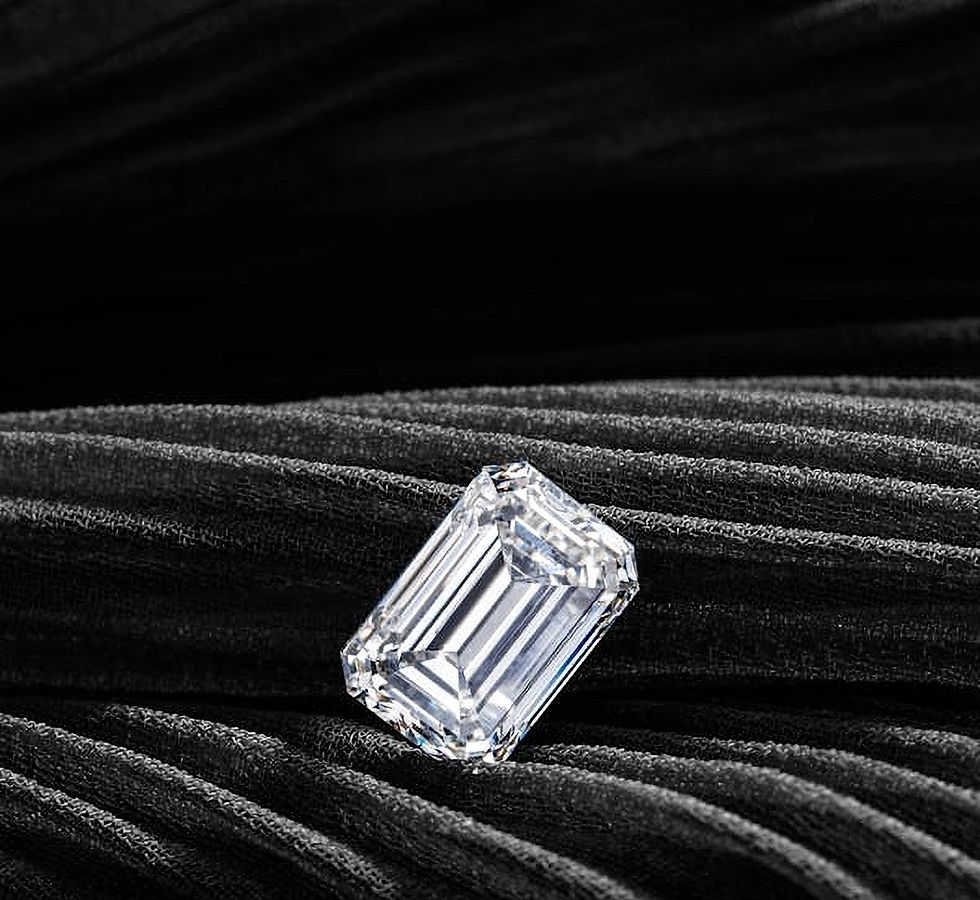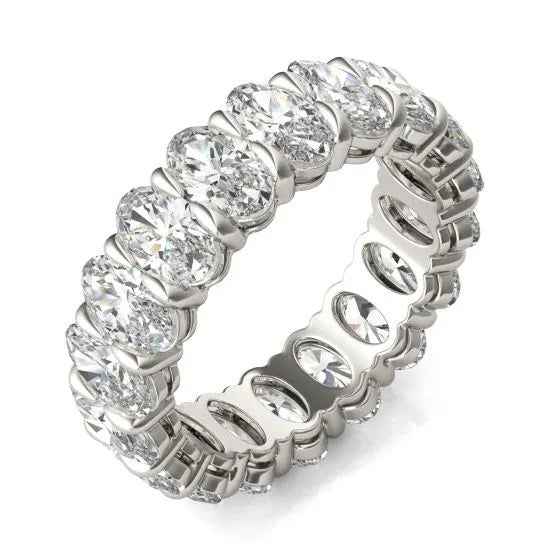Unlocking the Secret to Choosing the Ultimate Diamond for Your Dream Engagement Ring
- Arthur T. Baldwin

- May 6
- 5 min read
Choosing the perfect diamond for an engagement ring is more than just selecting a beautiful stone; it’s about finding a gem that captures love, commitment, and your unique journey together. The range of shapes, sizes, and qualities can be overwhelming, but this guide will help you navigate the enchanting process of selecting the ultimate diamond that will dazzle both you and your beloved. This choice symbolizes the love you share and the life you are building together.
Understand the Four Cs: Carat, Cut, Color, and Clarity
The Four Cs are essential criteria for assessing a diamond’s quality and value. Each characteristic affects the diamond's beauty and price, making their understanding vital for your selection process.
Carat: This measures the diamond's weight, with one carat being equal to 200 milligrams. The price per carat can increase significantly; for example, while a 1-carat diamond might cost around $5,000, a 1.5-carat stone could easily reach $12,000. Larger diamonds are rarer, impacting their cost.
Cut: The quality of the diamond's cut influences how well it reflects light. A well-cut diamond can appear larger and more brilliant, while a poorly cut diamond may look dull. For instance, a round brilliant cut can reflect up to 90% of light, compared to only 40% for a poorly cut diamond.
Color: Diamonds range from colorless (D) to light yellow (Z). Colorless diamonds are usually more valuable. A notable statistic is that diamonds in the G-H range can offer excellent value, balancing beauty and cost.
Clarity: This refers to the presence of internal or external flaws. Clarity grades range from Flawless to Included, with higher clarity diamonds being rarer. A diamond with a clarity grade of VS1 can still appear perfect to the naked eye.
Understanding the Four Cs empowers you to make informed decisions when considering diamonds for your engagement ring.

Choose the Right Shape for Personal Style
The shape of the diamond dramatically impacts the appearance of the engagement ring. Each shape has its own aesthetic and can reflect different personality traits.
Round diamonds are the best-selling shape and are known for their timeless elegance and brilliant sparkle.
Princess cut diamonds provide a modern twist with sharp corners, ideal for those who want an edgy yet sophisticated look.
Oval diamonds offer an elongated appearance that can make fingers look slimmer, combining classic and contemporary styles.
Other shapes, such as marquise, pear, emerald, and cushion, have distinct appeals. Take the time to reflect on your partner’s style. For example, if they lean towards vintage aesthetics, a cushion cut or antique-style setting might resonate more.
Setting the Scene: Choosing the Right Metal Band
Once you’ve selected the diamond shape and style, the next step is picking the perfect band. The metal choice can enhance the diamond’s brilliance and complement your partner’s style.
Platinum is a luxurious option symbolizing strength and durability. Its cool tone enhances a diamond’s color, making it a popular choice for higher-end rings.
White gold offers a similar look to platinum but generally costs less. However, it does require rhodium plating to maintain its luster over time.
Yellow gold and rose gold have become trendy due to their warm tones. They lend a romantic feel and can suit vintage or bohemian styles.
Consider your partner’s style and lifestyle when choosing a metal band. For instance, if they lead an active lifestyle, platinum might be a better option due to its resistance to scratches.

The Importance of Certification
When purchasing a diamond, certification from a reputable gemological lab is crucial. A certification validates the diamond's quality based on the Four Cs and gives you confidence in your choice.
The Gemological Institute of America (GIA) and the American Gem Society (AGS) are top organizations in the field. Their grading reports provide clear assessments of diamonds. Diamonds graded by GIA or AGS are generally seen as more trustworthy, helping you make an informed decision.
Always ask about the certification and make sure it aligns with the quality you expect. For example, a GIA-certified diamond provides peace of mind regarding its value.

Consider Your Budget
Engagement rings can be a significant investment, so it’s essential to establish a budget before you start shopping. Transparency about your budget can lead to better suggestions from jewelers who want to help you find the best value without compromising quality.
One effective strategy is to focus on diamonds slightly below popular carat weights. For instance, a 0.90-carat diamond can look just as stunning as a 1-carat one but typically costs about 15% to 20% less.
Be mindful of your total expenses, including the band, to find the right balance between diamond size and overall aesthetics.
Seek Guidance from Experts
Feeling overwhelmed is natural given the many choices available. Consulting a professional jeweler can provide clarity and guidance in selecting the perfect diamond.
Experienced jewelers understand the nuances of diamond shopping. They can help you navigate options and find a ring that resonates with your journey together. Custom designs may lead you to a ring that is uniquely yours, capturing your shared love story.
Personalization: Adding a Unique Touch
Personalizing an engagement ring can lift it from beautiful to extraordinary. Consider adding engravings of a special phrase or date inside the band.
You could also include smaller accent stones, like side diamonds or colored gems. For example, incorporating your partner's birthstone can make the ring even more meaningful.
Exploring vintage styles can introduce unique intricacies and charm. Vintage rings often feature delicate details that tell a story all their own, enhancing the engagement ring’s significance.
The Magic of the Moment: Presentation Matters
Don't forget that how you present the ring is just as important as the ring itself. Will it be a surprise in a romantic setting or a joint decision in a jewelry store? The engagement moment is a cherished memory.
Make it memorable by planning a thoughtful presentation that complements the beauty of the ring. Whether it’s a serene picnic, a sunset proposal, or a heartfelt moment at home, the way you choose to propose will make the experience even more special.
Crafting Your Love Story
Selecting the ultimate diamond for your engagement ring is a journey that beautifully illustrates the love and commitment between you and your partner. Every decision, from understanding the Four Cs to adding personal touches, enriches the significance of your symbol of love.
Take your time and consult with experts who can help guide you through this monumental choice. The perfect diamond is not just about the sparkle; it tells your unique love story, creating cherished memories that will last a lifetime.
Written for you - by Arthur T. Baldwin







Comments